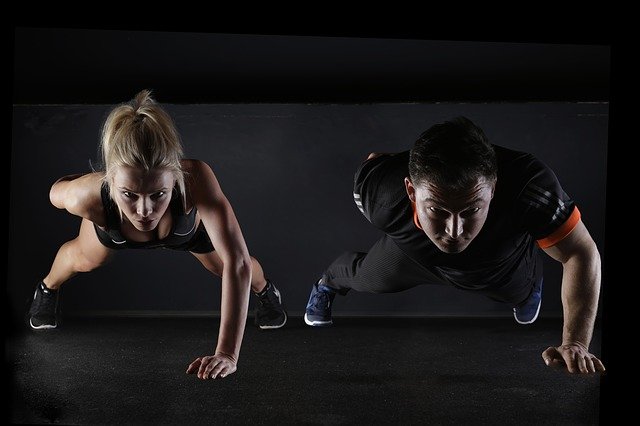
When our muscles are aching or sore, we tend to think that we should stop exercising and give things rest until we feel better. Unlike playing for an Intertops poker bonus where you are encouraged to come and exercise those ‘muscles!’ Sometimes continuing to exercise, stretching and walking can actually be very beneficial, and help the muscles recover. Of course, it really depends on the severity of the muscle soreness and the accompanying symptoms.
Below we look at when it might be better to discontinue working out and rest while your muscles recover and when it might be beneficial to continue.
When is it okay, and what are the benefits of working those sore muscles?
If the muscle soreness is not too severe, working those muscles can actually make you feel better. It can feel good to:
- Stretch those muscles
- To do some light resistance exercises
- Do gentle, low-intensity exercise like swimming or walking
It is also possible to concentrate on muscle groups that you don’t usually work on. For instance, adding arm movements to your workout, when that workout usually involves a run.
The chances are these recovery exercises will make you feel good and may even offer you other health benefits. All-round exercises like walking, easy bike riding or gentle swimming do help with circulation and move blood through the muscles. This increase in blood circulation may have a positive impact and help your muscles to recover more quickly. However, it is important that you don’t overdo things and actually overload those sore muscles.
These types of recovery exercises may well be on par with the benefits of receiving a massage to relieve muscle soreness. A study of 48 people looked at the soreness levels after they did some upper trapezius muscle exercises. Some of those involved in the study were given a ten-minute massage straight after their workout. Other participants did some exercises which involved a resistance band. The results found that both groups recovered equally well and that both experienced delayed or temporary relief from muscle soreness.
Damage to muscles and muscle development
Tiny tears in the muscle or breakdown of muscle tissue can cause DOMS (delayed onset muscle soreness) following a workout. Experimenting with a new kind of exercise or increasing the amount of exercise may increase the amount of soreness you are likely to experience in the days after a workout. However, after a while, your muscles do get used to that increased exercise and they will become more resilient and less likely to tear or break down.
The body will respond to micro-tears of the muscles by using satellite cells to repair the tears and build them up again. This will help to protect them in the future and prevent any future damage and, at the same time, increase muscle development.
Making sure you are eating a good amount of protein is very important as this will ensure that your muscles are rested and this process is able to come about.
What are the risks of continuing to exercise?
On the whole, exercising gently in order to recover can be beneficial. However, overdoing the exercises can cause harm and can even be unhealthy and dangerous.
If after a workout you are experiencing any of the following symptoms you should stop exercising for a while so your body can recuperate. It is also worth visiting your doctor.
- If your heart rate is increased even when resting.
- Feelings of depression or mood swings.
- Feeling constantly fatigued.
- Joint and muscle pains.
- Overuse injuries.
- Experiencing more colds and/or illnesses.
- Loss of appetite.
- Problems with sleeping.
- Experiencing difficulties with your usual athletic performance even after you are rested.
Basic soreness versus real injury
If you are sore after work-out it can feel quite uncomfortable but it should not be painful and you should experience relief from the discomfort anywhere from 48 to 78 hours afterward. But athletic injury is different and can include any of the following symptoms:
- Feeling unwell and nauseous.
- Experiencing a sharp pain.
- Having pain that doesn’t go away.
- Any swelling that occurs.
- Experiencing tingling or numbness.
- Black or blue marks appearing on the body.
- The injured area stops functioning properly.
If you experience any of the above you should visit your doctor. Your doctor may prescribe some medications or give you some advice as to proceed. Alternatively, if a more serious injury is suspected, an x-ray of the area may be carried out to see if anything further needs to be done.
Suggestions for preventing soreness from occurring.
To avoid delayed onset muscle soreness, it is recommended that you cool down after your workout. When you cool down, unlike a warmup, you are slowly bringing your heart rate back down and normalizing your body into a resting state.
You should begin with a leisurely walk or a gentle bike ride for 5 or 10 minutes. Follow this with some gentle stretching exercises for a further 5 to 10 minutes as this may help to rid the body of lactic acid which can build up during exercise and may create a burning sensation in the muscles. Getting rid of this acid will help you recover quickly when you next exercise.
Using a foam roller is an excellent way to expel tension after working out.
Some of the following activities can help in the recovery process and may prevent or lessen soreness:
- Yoga.
- Using a resistance band and different stretching movements.
- Walking and gentle hiking.
- Gentle swimming.
- Low-density cycling.
When beginning a new workout regime or trying out new exercises, it is important to go slowly and not overdo things. You should gradually increase the intensity of the workout giving your body time to adjust to the new regime and prevent any soreness. You should also obtain your doctor’s okay to your new exercise routine.
If you are relatively fit, you will probably be able to return to your fitness routine within a couple of days or within a week when your body has recovered. It is always useful and wise to speak with a professional trainer to ascertain what is a safe and suitable exercise regimen for you personally.
In Summary
Generally, in most situations, gentle exercises like walking or swimming are good to do if you are feeling sore after a workout and may help you to recover. But if you are really in pain or feeling fatigued then you should just rest.
Make sure you visit your doctor if you think you have sustained a real injury or if you see that the soreness is not lessening after a few days.
Remember that even professional athletes have to rest and take some time off.



